#hridaya
Text

HEART
Is not a state of Consciousness
States come & go in
HEART
#consciousnesses#heart#hridaya#alchemy#feminine magic#esoteric#oracle#witch#patriarchy#presence#magic#love
0 notes
Video
youtube
Hridaya Kuhara Madhye 'Sloka Chanting'
🕉️
हृदयकुहर मध्ये केवलं ब्रह्ममात्रम्।
ह्यमहमिति साक्षद् आत्मरुपेण भाति॥
हृदि विश मनसास्वं चिन्वता मज्जता वा।
पवन चलन रोधाद् आत्मनिष्ठो भव त्वम्॥
hṛdayakuhara madhye kevalaṃ brahmamātram।
hyamahamiti sākṣad ātmarupeṇa bhāti॥
hṛdi viśa manasāsvaṃ cinvatā majjatā vā।
pavana calana rodhād ātmaniṣṭho bhava tvam॥
🕉️
‘Hridaya-Kuhara-Madhye’, In the centre of the Heart cave
In the centre of the cave which is the Heart, the one (non-dual) Brahman alone shines directly in the form of Self as ‘I-I’ (or ‘I am I’ ). Enter the Heart (by the mind) sinking scrutinizing Self, or by the mind sinking along with the breath, and be one who abides in Self.
~ Ulladu Narpadu - Anubandham (Reality in Forty Verses - Supplement), V. 8
Note: One day in 1915 a devotee named Jagadiswara Sastri started to compose a Sanskrit verse beginning with the words. ‘Hridaya-Kuhara-Madhye’, (In the centre of the Heart cave), but finding that he was unable to proceed any further to express in verse form the idea which he had in mind, he implored Sri Bhagavan to complete the verse for him. Sri Bhagavan accordingly completed the verse and wrote underneath ‘Jagadisan’, thereby indicating that the ideas in the verse were those of Jagadiswara Sastri and not His own. Some years later, at the request of some Tamil devotees who did not know Sanskrit, Sri Bhagavan translated this verse into Tamil, and the Tamil version, which is given above, was later added in the Anubandham.
_____________
Kavyakanta Ganapati Muni also included this verse in his Sri Ramana Gita, ch. II, v. 2.
🕉️

___________________
The Sanskrit verse is a facsimile of Sri Ramana Maharshi’s handwriting reproduced from the manuscript.
___________________
Eka Sloki of Sri Ramana Maharshi, his most important verse, was mounted during Bhagavan´s lifetime, obviously with his consent, above his ornate marble couch in the New Hall, where the verse is engraved in gold Sanskrit letters on a tablet of polished black marble.

Image credit: https://www.facebook.com/RamanaMaharshi - Post dated 12.06.2020
🕉️
#youtube#Bhagavan Sri Ramana Maharshi#Sri Ramana Gita#B. V. Narasimha Swami#Kavyakantha Ganapati Sastri#Jagadiswara Sastri#Heart#Heart - cavern#hridaya kuhara madhye#self-investigation#self-inquiry#vichara#atma-vichara#Who Am I?#plunge the pure mind into the Heart
6 notes
·
View notes
Text
Unveiling the Wisdom of Ksheera Varga: Exploring Astanga Hridaya's Eight Types of Milk, Milk Products, and Their Ayurvedic Properties
Welcome to a journey through the timeless wisdom of Ayurveda as we delve into Ksheera Varga, a profound concept from Astanga Hridaya. In this blog, we’ll unravel the secrets behind the eight types of milk and their products, exploring the rich tapestry of Ayurvedic knowledge.
**Understanding Ksheera Varga:**
Ksheera Varga, as detailed in Astanga Hridaya, classifies milk into eight categories…
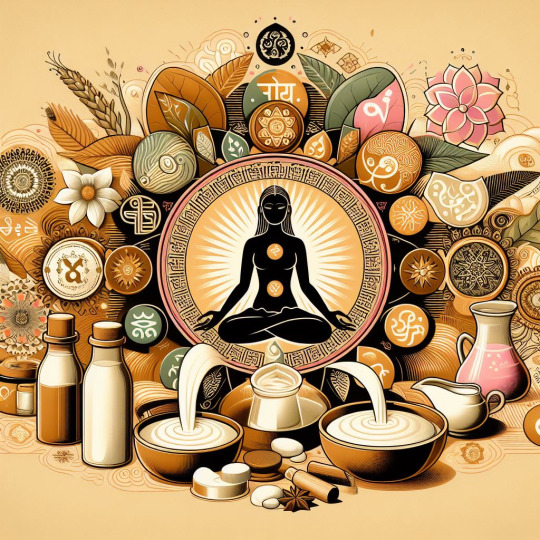
View On WordPress
#Astanga Hridaya#Ayurveda#Ayurvedic Concepts#Health#Ksheera Varga#Milk Products#Sanskrit Verses#Wellness
0 notes
Text
Aditya Hridaya Stotra Lyrics » आदित्य हृदय स्तोत्र संपूर्ण पाठ
Aditya Hridaya Stotra Lyrics » आदित्य हृदय स्तोत्र संपूर्ण पाठ
Aditya Hridaya Stotra ( आदित्य हृदय स्तोत्र ) वाल्मीकि रामायण के युद्ध काण्ड मे लिखे भगवान सूर्य देव के मंत्र हैं।
Aditya Hridaya Stotra Lyrics » आदित्य हृदय स्तोत्र संपूर्ण पाठ
आदित्य हृदय स्तोत्र ( Aditya Hridaya Stotra ) का पाठ, नौकरी में पदोन्नति, धन प्राप्ति, प्रसन्नता, आत्मविश्वास के साथ-साथ समस्त कार्यों में सफलता पाने तथा…
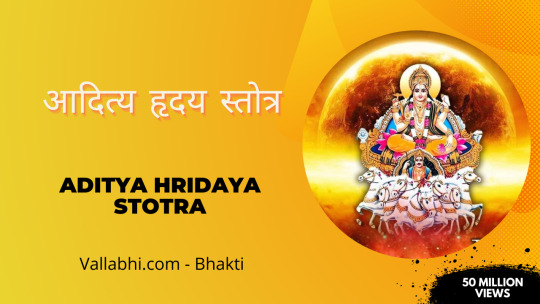
View On WordPress
#Aditya Hridaya Stotra#aditya hridaya stotra benefits#aditya hridaya stotra in english#aditya hridaya stotra in kannada#Aditya Hridaya Stotra Lyrics#आदित्य हृदय स्तोत्र#आदित्य हृदय स्तोत्र संपूर्ण पाठ#आदित्य हृदयम स्तोत्रम लिरिक्स#आदित्य-हृदय स्तोत्र#आदित्यहृदय स्तोत्र
0 notes
Link
सूर्य देव (सूर्य देव) को समर्पित आदित्य हृदय स्तोत्रम ( Aditya Hridaya stotra ) सबसे शक्तिशाली स्तोत्र में से एक है
0 notes
Text
Matthew Patel Analysis

I would like to say first off, I am not Indian. I am a Mexican kid who just really likes learning about different cultures. If anything in this is incorrect, offensive, or just overall dumb, I would really like to be corrected and would REALLY like to be able to fix it.
I’ve been trying to decipher what the markings on the demon girl’s and Matthew’s foreheads are. The main assumption would be that they are bindis, but that doesn’t sit entirely right with me when you think about what they represent in Indian culture.
For the demon girls, you COULD say that the markings are bindis, and that they are supposed to represent something “marital”, which would then imply that their binding to Matthew is more complicated, but I personally disagree with this for multiple reasons.
Then of course, for Matthew that would be a bit more complicated. Married women aren’t the only ones who use bindi markings of course as they also can have other uses and meanings, such as representing the third eye. Given Matthew’s powers, this would make sense, but it still doesn’t fully fit correctly in my beautiful mind.
The biggest thing that perplexes me is their colors and shape. They aren’t exactly round--they actually seem to be more elongated, like a very thin teardrop. This made me wonder if they were actually supposed to be tilaks instead, which makes slightly more sense to my big brain. This has to do with two main reasons: 1, both men and women can wear it. 2, Shiva and Shakti.
Let’s start with Shakta.
“Shaktas (worshippers of Devi — the feminine manifestation of the Divine) use kumkum to either draw a single red vertical line, or place a red dot, as a symbol of her divine energy and power.” Source: https://www.hinduamerican.org/blog/5-things-to-know-about-tilak
Shakta is the consort of Shiva, the goddess who is often personified as “Devi”, who acts as the divine feminine to Shiva’s divine masculinity.
“Yoni, (Sanskrit: “abode,” “source,” “womb,” or “vagina”) in Hinduism, the symbol of the goddess Shakti, the feminine generative power and, as a goddess, the consort of Shiva. In Shaivism, the branch of Hinduism devoted to worship of the god Shiva, the yoni is often associated with the lingam, which is Shiva’s symbol. In sculpture and paintings, the lingam is depicted as resting in the yoni as a cylinder in a spouted dish. The two symbols together represent the eternal process of creation and regeneration, the union of the male and female principles, and the totality of all existence. In a myth narrated in several Puranas, the body of Sati, an avatar of Shakti, is dismembered and scattered throughout India. Her yoni falls, and remains, in Assam, regarded as the home of Tantra (esoteric practices).” Source: https://www.britannica.com/topic/yoni
These statements already clear up the shape, color, and meaning behind the girl’s markings. They are the feminine consorts to Matthew Patel and his escapades. Personally I really like this for multiple reasons, the biggest being that it makes their dynamic significantly more wholesome. This article, https://hridaya-yoga.com/blog/yoni-puja/, talks about the yoni tantras and overall adoration and respect for women. While Matthew and his girls don’t interact together much in terms of actual conversation, the general case seems to be that they are protective, uplifting, and devoted to him, while in return we see that they are treated with respect and not once does he ever see them as lesser or treat them as such. (This could be countered with the fact that they do get put in harm's way a lot, but given that they seem to be able to respawn just fine it probably isn’t an issue and something they are willing to do for him anyways.)
With that, let’s talk about Shiva.
“Shiva meaning “The Auspicious One” is one of the three major deities of Hinduism. He is worshiped as the Supreme God within Shaivism, one of the three most influential denominations in contemporary Hinduism and is also called “the Transformer and the Destroyer”.” Source: https://www.templepurohit.com/shiva-worshipped-form-linga-lingam/#google_vignette
Matthew and Shiva have lots of things going on, which personally I find really freaking cool. He literally summons what appears to be the trishul, which is Shiva’s trident. How dope is that??
“The Trishul, also known as the trident, is the primary weapon of Lord Shiva. It is characterized by three sharp blades connected by a long handle. The three blades always point in the upward direction. Shiva is always found to be holding the handle of the Trishul when he is depicted in the saguna linga form. The three blades have various representations in Hindu mythology.” Source: https://servdharm.com/blogs/post/significance-of-shivas-trishul#:~:text=The%20Trishul%2C%20also%20known%20as,in%20the%20saguna%20linga%20form.
When it comes to the actual symbol on his forehead however, that becomes more difficult. I wondered if he was Shaiva (Shaiva meaning “follower of Shiva”), and that was what the symbol meant, but I couldn’t find anything regarding his specifically.
“Shaivites (worshippers of Shiva), for example, smear their foreheads with three horizontal lines of vibhuti, a sacred white ash that acts as a reminder of the temporary nature of the material world. Made of the burnt dried wood from Hindu fire rituals, the three lines of vibhuti are called tripundra, and represent Shiva’s threefold powers of will, knowledge, and action. Tripudra is also frequently worn with a dot made of kumkum (a powdered red turmeric) in the center, symbolizing the creative and energetic force of the Divine known as the Goddess Shakti.” Source: https://www.hinduamerican.org/blog/5-things-to-know-about-tilak
Interestingly enough, the tripundra does share the teardrop shape that Matthew has. What confuddles me is the lack of the three lines, and the color. I am unsure as to whether or not this has meaning, was on purpose, or was just what they decided to go with.
I did however come to the conclusion that the color might be related to bhasma (calcine ash), more specifically, “Pushpa Kasisa, which is crystalline with bluish green color.” Source: https://www.ncbi.nlm.nih.gov/pmc/articles/PMC3530270/
“Bhasma is a Sanskrit word that means “bone ash,” “cinder” or “disintegration.” It comes from the root bha, meaning “delusion,” “appearance” or “likeness,” and sma, meaning “ever” or “always.” In Hinduism and yoga, bhasma is sacred ash. In some traditions, it is thought to contain the energy of Shiva.”
“In the spiritual context, bhasma symbolizes burning the ego to ashes in order to unite with the higher Self or the divine. It represents liberation from the limitations of mortal life and freedom from the cycle of reincarnation. It is also a reminder of the temporary nature of the physical body, which will one day return to ashes.
Also called vibhooti, bhasma is the sacred ash from the fire of a yogi or saint or from the sacrificial fire known as yajna in which special wood, herbs, grains, ghee and other items are offered as part of a worship ritual. Bhasma is thought to destroy sin and consume evil.” Source: https://www.yogapedia.com/definition/5934/bhasma#:~:text=In%20the%20spiritual%20context%2C%20bhasma,from%20the%20cycle%20of%20reincarnation.
Overall it appears that bhasma is applied to protect its wearer from physical harm/illness as well as serving its spiritual purposes which works really well given that it appeared during a fight where Matthew was in fact, getting harmed.
(I do want to mention though that I do think that it is not actual bhasma as that really wouldn’t make sense, but the similarities and “coincidences” are really cool to me.)
Okay, how does this relate to Matthew’s powers?
“According to yogic texts, there exist seven major chakras (discs of subtle concentrated energy) that run along the center of the body, each of which relate to some aspect of a person’s physical, emotional, and psychological make-up. Tilak is placed on the forehead between the eyebrows where the ajna chakra is located. As ajna means to “perceive” or “command,” the ajna chakra is considered to be the “eye of intuition,” through which a person can discern information that cannot otherwise be seen with one’s physical eyes. This “third eye” is a spiritually potent part of one’s being that helps one to focus inward on the Divine. Tilak, therefore, is placed on the ajna chakra to invoke this divine energy, as well as act as a reminder of the ultimate life goal.” Source: https://www.hinduamerican.org/blog/5-things-to-know-about-tilak
If Matthew is invoking the power of Shiva to aid him through the third eye, or the ajna chakra, this would make the most sense (and would explain why we hadn’t seen it before, probably). I also think it explains his fireballs pretty well, as I’ve noticed a lot of fire and burning practices and metaphors throughout my search for answers.
Oh, also, this: “Shiva's tapas generated so much heat that his body transformed into a pillar of fire - a blazing lingam that threatened to destroy the whole world. The gods did not know how to control Shiva's fire.”
In fact, the whole summary article thingy is really cool to me, so i’ll put it all here.
“Shiva saw no sense in the transitory pleasures of life, so he rejected samsara, smeared his body with ash, closed his eyes and performed austerities.
Shiva's tapas generated so much heat that his body transformed into a pillar of fire - a blazing lingam that threatened to destroy the whole world. The gods did not know how to control Shiva's fire.
Suddenly there appeared a yoni - the divine vessel of the mother-goddess. It caught the fiery lingam and contained its heat, thus saving the cosmos from untimely destruction.
Shiva is often pictured in a pacific mood with his consort Parvati, as the cosmic dancer Nataraja, as a naked ascetic, as a mendicant beggar, as a yogi Dhakshinamurthy, and as the androgynous union of Shiva and Parvati in one body (Ardhanarisvara).
Shiva also takes the form of Ardhanari, his androgynous form. The right side of the sculpture is Shiva and the left side is Parvati. The attributes of each are split directly down the middle.
Another example of Shiva's apparent synthesis of male and female attributes is seen in his earrings. He often wears one earring in the style of a man and the other as a female.” Source: https://www.lotussculpture.com/shiva-hindu-god-lord-destruction-meaning-symbolism.html#:~:text=Shiva's%20tapas%20generated%20so%20much,how%20to%20control%20Shiva's%20fire.
So yeah, there you have it. Here is every single source I used:
Shiva
https://servdharm.com/blogs/post/significance-of-shivas-trishul#:~:text=The%20Trishul%2C%20also%20known%20as,in%20the%20saguna%20linga%20form.
https://www.lotussculpture.com/shiva-hindu-god-lord-destruction-meaning-symbolism.html#:~:text=Shiva's%20tapas%20generated%20so%20much,how%20to%20control%20Shiva's%20fire.
https://en.wikipedia.org/wiki/Shiva
https://en.wikipedia.org/wiki/Trishula
https://www.templepurohit.com/shiva-worshipped-form-linga-lingam/#google_vignette
Shakti/Yoni
https://www.britannica.com/topic/yoni
https://hridaya-yoga.com/blog/yoni-puja/
https://kripalu.org/resources/shakti-power-within-you#:~:text=Shakti%20means%20power%2C%20energy%2C%20or,the%20divine%20masculine%20god%20Shiva.
Tilak
https://www.linkedin.com/pulse/tilak-ancient-practice-significance-neeta-singhal
https://www.hinduamerican.org/blog/5-things-to-know-about-tilak
https://www.britannica.com/topic/tilak
https://en.wikipedia.org/wiki/Tilaka
Bindi
https://exametc.com/magazine/details.php?id=900
https://www.sanskritimagazine.com/bindi-meaning-and-significance-of-the-dot-on-forehead/
https://en.wikipedia.org/wiki/Bindi_(decoration)
Bhasma
https://www.yogapedia.com/definition/5934/bhasma#:~:text=In%20the%20spiritual%20context%2C%20bhasma,from%20the%20cycle%20of%20reincarnation.
https://pubmed.ncbi.nlm.nih.gov/24696811/#:~:text=There%20are%20various%20importance%20of,heavy%20metals%20in%20the%20body.
https://www.ncbi.nlm.nih.gov/pmc/articles/PMC3530270/
Third Eye
https://en.wikipedia.org/wiki/Third_eye
#matthew patel#scott pilgrim takes off#scott pilgrim takes off spoilers#spto spoilers#spto#onion's thoughts
153 notes
·
View notes
Text
A snippet from Krishavyayam hehe-
Small points to be noted before you get started—
Kamalnayani/ Hridayaa/ Mohini are the same person. The same oc has multiple names.
Mohini is also Hari here, as we know. Hence, Mohini and Mohini it is hehe-
Please if this offends you, tell me and I'll pull it down. This is purely fiction and does not intend to offend any religious beliefs and sentiments.
You'll find the whole book on Wattpad, so cheers! ✨

She was bewitching. The woman before whom demons swooned and caelitis were rendered wordless. Dark as the zenith hour of dusk and as radiant as a nymph who rose from the cerulean waves, she had her wife in a daze for she had poof-ed out of the blue (god).
Kamalnayani looked half amused, half moonstruck as Mohini grinned at her, winking notoriously. She sported a red and black lehenga of chiffon, diamantes stuck to the flowy fringes as well as her kohl-lined eyes and she swung a vial of mead in her willowy fingers— all too coquettishly.
Why, you ask?
"Because I last saw her so long ago," Hridayaa accentuated, sheepishly batting her eyes at Kanha and linking an arm of his to hers. The latter had mirth dancing in his very handsome features and it wouldn't be wrong to say he missed those precious moments either.
Ogres raced hither and thither for one touch of Mohini who swaggered through the waves, effortlessly charming all. Flowy tresses wrapped in the whiff of lotus and pearl ornaments dangled on her voluptuous form. She was beautiful and lethal. Woman and vulpine.
"And I miss her."
He snorted out a laugh, tendrils jumping up to his forehead to kiss them and then he obstructed them with a rake of his sculpted fingers, "I am literally right here, Hridayae."
"No, Mohini." She whined, almost hopping in her place but he disciplined her with quasi glare. Krishu pouted, seeming more of a child than a mother— as if demanding not a woman but a candy. "I want Mohini! She can give me excellent company these days and you know we're nearing the due date. Also she had a kid so she can give me great parenting tips meant for mothers. Kanha pleaseeeeee?"
"As my queen pleases."
And so, Mohini and Mohini were now face to face after ages— giggling vivaciously and maniacally at each other's sight.
"So where should I escort you now, wife?"
"Jhumka shopping!" Krishu tugged her, then waddling around to the brass and copper caskets to arrange for casual robes for herself. Mohini hummed and slipped herself in the quilts of the soigne bed, then spat her beverage right through her mauve lips out of pure whammy when the whims of Kamalnayani surprised her again.
"And we're hitched. We are begetting a kid through the blessing of an austere sage. I don't want anyone ogling at you in the marketplace, hmm? They don't have any right to."
She shortly inclined her head in a yes, inarticulate. Of course, they were married.
"Right. Only you do." The goddess simpered through the chalice sitting on her mouth. Then she clipped her bracelet against her dainty wrists, kissing where the pulse chanted the name of an archeress.
─── ⋅ ∙ ∘ ☽ ༓ ☾ ∘ ⋅ ⋅ ───
"This for Bhadra Jiji, this for Lakshu Jiji and oh— Jambavati Jiji adores teals and turquoise!"
Oxidized silver bracelets, bronze armbands, floral rings and arabesque silks brimmed the tawny stalls on wheels as the two goddesses stirred past them, riveted by the grandeur of the city that was their latibule. Krisha and Mohini walked hand in hand, occasionally picking a bloom or two to profess their love in dramatic whispers as their secretive chortles became the fantasies of little girls who watched them from afar.
The ivory and maroon turban with pearl motifs caught her attention and then she waved her hand at her husband- urhm, wife.
Kamalnayani smiled at the lady vendor who beamed at her with gentle eyes. "What do you expect?"
"A healthy baby. Nothing more." She shrugged cordially, looking over her shoulder to find Mohini partially veiling herself as she peered at the bustling streets through the rich translucence of her raiments.
"She seems new here. Do you know her?" The genial old woman squinted, "Why would she do that? Does she not know it's not normal to mantle her face in Aryan practices?"
"She's new here, Kaaki," Hridayaa answered in a jiffy as Mohini sprang to catch up with her, flashing the gleam of her cloaked dagger to the bandits who gawked at her. The bunch inhaled sharply, going about their own businesses when they recognised her as a beguiling mirage. An elusive dream.
Women with lethal beauty were to be feared. It was doltish to trust her who had other eyes trailing on every gait she took.
"Mohini. She's enchanting and gravitates a lot of attention to herself she doesn't wish for."
"Oh. Your friend?"
"This is my wife, aunt." Mohini giggled instead as the seller flushed, then ducked her head while murmuring a small apology. "No worries."
"Exquisite couple, best wishes to both of you." She fished out a leaf of tamarind from her purse, then slid the velvet turban from the honey-eyed woman to the one whose smile was as sweet as it. Kanha— now Mohini, brought a pair of suryakanthi jhumkas and slipped in Hridayaa's lotus palms.
"Pretty moms make pretty babies."
Kaaki Sulochanaa— with eyes as pulchritudinous as her name— chuckled once again at the flushed women who squirmed a little closer to each other, surreptitiously stealing gazes and then shuffling in opposite ways, the presents never seeming enough.
"Oh, so you both aren't yet out of the mushy-mushy phase?"
─── ⋅ ∙ ∘ ☽ ༓ ☾ ∘ ⋅ ⋅ ───
The dusk and the moon and their realm in Dvaravati wasn't exotic to their ardor for each other. It was the atelier of the art they painted each other in.
The scarlet roses and ivory jasmines embraced each other in the curls of the enchantress who sat between the legs of her wife, inclining her swan neck to the side as her eyes shut themselves when ivory fingertips skimmed through her scalps and skin. The sleek obsidian waterfalls and warm breaths of the woman of flames fondled her nape and Mohini wanted to flee into the aisles to escape from her namesake, but she knew the sacred smokes and ambrosia would chase her still. For the woman who carried their child was said to have seized the sense of a thousand men too around her.
"You are seducing me, good lady Kamya?" She crooned, her voice as soothing as the psithurism of the forest they promised to be each other's.
"Keep dreaming. I have always wanted to do your shringara," Agneyaa murmured lying through her teeth and when she felt a frisson run down below her touch she smirked. "Hesitate for nothing though, darling. I am quite a charmer I am told."
Mohini let out a shuddered breath, rolling her eyes and then she caught the hand of Mohini who was yet sniggering at her. "Enough now. Your skills are laudable. I have never looked this beautiful." Her gaze traversed to the mirror which gaped at two women like long lost lovers. The stones of lapis lazuli and rubies and diamonds were bestrewed upon her lithe physique like stars on the ether. A spark birthed in her guts and she was an art. An art to be ravished by her lover.
Kamalnayani giggled and pressed a chaste kiss to the cheeks of that beauty who turned pink. Then she filled the dips of the curves of Mohini's spine with her fingers binding the kamarbandh, husking near her earlobes, "Lies."
She stifled the throes of her heart and an amaranthine smile stayed on her visage. As they multiplied and she was unwavered, she was the epitome of every mother. Mohini whisked around and pulled her in a slow dance, unhurried and buoyant as their limbs swayed in poised waves— grinning as they found forelsket again and again.
Afterall, nightmares were dreams too. The heart of Keshava was living a vision of a lover for now.
─── ⋅ ∙ ∘ ☽ ༓ ☾ ∘ ⋅ ⋅ ───
Kanha found blue roses, azure water lilies and peacock feathers all tied together by a string as a gauzy navy robe enveloped them. "They reminded me of you, love." The whimsical note read, stuck to the spruce wood table and he grinned plucking them from it.
"And oh, I loved being with Mohini."
He was a fuchsia yet again.
The setting was an atelier of a picturesque art in making— born of the love of an archeress and the chakradhaari.
37 notes
·
View notes
Photo


PRAYER TO LORD HANUMAN JI
1. I bow to the Son of the Wind,
A fire to burn the forest of the wicked, and a rain cloud of wisdom
O wide-hearted one, Shri Ram, the holder of the bow
Lives in you.
Pranawun Pawanakumaar
Khala bana paawaka gyaana ghana,
Jaasu hridaya aagaar basahin Raama sara chaapa dhara
2. Your body shining like a mountain of gold
Is the home of immeasurable power.
You are the fire that burns the whole demon race…
The wisest of the wise.
Atulita bala dhaamam, hemashailaa badeham,
Danujawana krishaanum, gyaaninaama graganyam.
3. First among monkeys! All goodness finds a home in you.
You are the most beloved of Ram’s devotees.
Son of the wind, I bow to you.
Sakala guuna nidhaanam, vaanaraa naama dheesham
Raghupati priya bhaktam, vaata jaatam namaami.
4. For this world you are like Ram
For the demons, you are like fire.
You are the great jewel in the garland of the Ramayan.
Son of the Wind, I bow to you.
Goshpadee krita vaareesham, mashakee krita raakshasam
Raamaayana mahaamaala ratnam, vande neelaatmajam.
5. You are Anjani’s heroic son,
The destroyer of Sita’s suffering.
Lord of Monkeys, Killer of Demons,
Terrorizer of Lanka, I bow to you.
Anjanaa nandanam veeram, Jaanakee shoka naashanam
Kapeesha makshahantaaram, vande Lankaa bhayankaram.
6. You jumped over the ocean so easily
to put out the fire of Janaki’s grief
Burner of Lanka, I bow to you.
Ullanghya sindho salilam saleelam
Yaha shoka wanheen Janakaatma jaayaaha
Aadaaya tenaiwa dadaaha Lankaa
Namaami tam praanjali raanjaneyam.
7. You have conquered your mind, you move as fast of the wind.
You have conquered the senses,
You overflow with wisdom and mercy.
Son of the Wind, you are Ram’s messenger in this world.
Lion among Monkeys! Give me refuge!
Manojavam Maaruta tuulya wegam
Jitendriyam buddhimataam warishtam
Vaataatmajam vaanara yuuta mukhyam
Shree Raamaduutam sharanam prapadhye.
8. Wherever Ram’s name is being sung,
You go there and bow,
Your eyes filled with tears of love.
Son of the wind, Destroyer of demons, I bow to you.
I bow to You, I bow to you.
Yatra yatra Raghunaata keertanam
Tatra tatra krita masta kaanjalim
Vaashpawaari paripuurna lochanam
Maaruteen namata raakshasaantakam.
Bolo Bajarangbali Mahaaraaja Kee Jai!
Hail to the Thunderbolt-bodied One (Hanuman), The Great King, Hail!
Jai Shri Ram ~ Jai Mahavir Bajrang Bali Hanuman
--The Shiva Tribe
84 notes
·
View notes
Photo

The silence of the Sage
Paul Brunton found that the Maharshi’s way of helping others was by an unobtrusive, silent and steady outpouring of healing vibrations into troubled souls, a mysterious telepathic process for which science will one day be required to account.
(Image source: Pinterest: Canta Dadlaney)
ॐ
I shall truly declare the essence of the established conclusion of all Vedanta (Sarva-Vedanta-Siddhanta-Sara). If ‘I’ (the ego) dies and ‘I’ (the real self) is (found to be) That (the absolute reality), know that ‘I’ (the real self), which is the form of consciousness, alone-will be what remains.
~ Ulladu Narpadu - Anubandham (Reality in Forty Verses - Supplement), V. 40
ॐ
Note :
Since verses 9, 25 and 40 of this Anubandham were originally composed by Sri Bhagavan as a separate three-verse poem it is fitting to read these three verses together.
“If the ego, which is the embryo, comes into existence, everything (the entire world of duality) will come into existence.
If the ego does not exist, everything will not exist, (Hence) the ego itself is everything——”
says Sri Bhagavan in verse 26 of Ulladu Narpadu. Therefore, when the ego is destroyed by self-knowledge, all forms of duality – the mind, body and world – will cease to exist, and the non-dual real self, whose form is Existence Consciousness-Bliss, alone will remain. Such is the final and established conclusion of all Vedanta, as confirmed by the experience of Bhagavan Sri Ramana.
✨✨✨✨
#Bhagavan Sri Ramana Maharshi#Ulladu Narpadu: Anubandham#Reality in Forty Verses-Supplement#UNAnubandham v.40#UNA v.40#non-duality#advaita#self#existence-consciousness ‘I am’#Hridaya Heart Centre#Heart lotus#vichara#atma-vichara#Who am I?#Self-enquiry#Self-Investigation#sphurana 'I-I'#adjunctless consciousness ‘I’#extinguishment of thought#state devoid of thought#annihilation of the mind
8 notes
·
View notes
Text
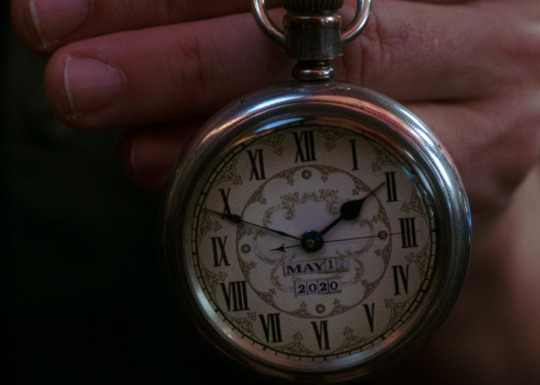


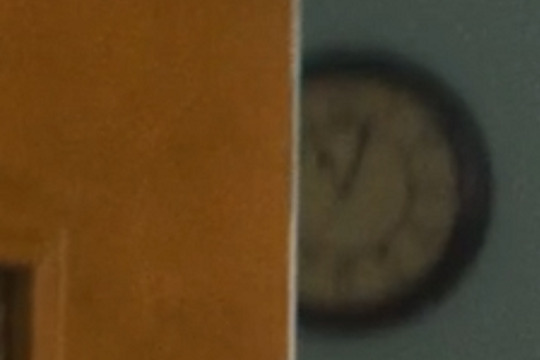

not what i set out to finish, got a bit distracted on other meta ends, but too good to leave sitting in drafts
and no just in case you think that's when they set all their clocks, or it was actual time, no and no. there was a lot of interesting clockwork in 15.01 to begin with, I just tagged my stuff back then poorly

In Manipura and below, man is bound by the laws of karma and fate. In Anahata one makes decisions ("follows one's heart") based on one's higher self, not the unfulfilled emotions and desires of lower nature. As such, it is known as the heart chakra.
It is also associated with love and compassion, charity to others and psychic healing. Meditation on this chakra is said to bring about the following siddhis (abilities): he becomes a lord of speech, he is dear to women, his presence controls the senses of others, and he can leave and enter the body at will.
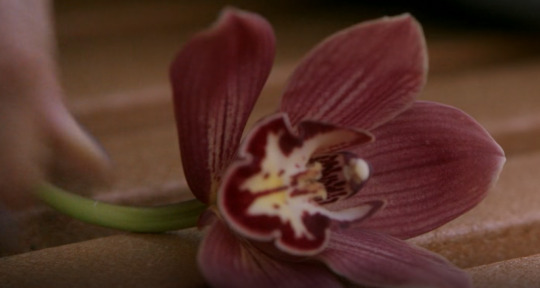



Anahata (Sanskrit: अनाहत, IAST: Anāhata, English: "unstruck") or heart chakra is the fourth primary chakra, according to Hindu Yogic, Shakta and Buddhist Tantric traditions. In Sanskrit, anahata means "unhurt, unstruck, and unbeaten". Anahata Nad refers to the Vedic concept of unstruck sound (the sound of the celestial realm). Anahata is associated with balance, calmness, and serenity.
The name of this chakra signifies the state of freshness that appears when we are able to become detached and to look at the different and apparently contradictory experiences of life with a state of openness (expansion).
Normally we are not used to the effect produced by the confrontation of the two opposite forces. At the level of Anahata chakra appears the possibility to integrate the two opposite forces and obtain the effect (sound, in this case), without the two forces being confronted (without touching of the two parts).
This energy is specific to cooperation and integration, which brings peace and a new perspective in a world which, up to this level (considering only the energies specific to the first three centres of force: Muladhara, Swasdhistana and Manipura) was made only of a more or less conscious confrontation between opposite forces. The name Anahata suggests, in fact, the synergetic effect of the interaction of energies at this level.
Anahata is considered to be a tiny flame inside the heart. associated with the ability to make decisions outside the realm of karma.

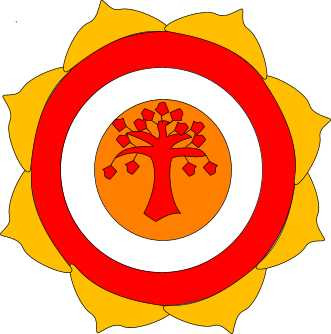
Hrit (Hridaya, Surya) chakra
Tree inside two circles inside a lotus flower
The Hrit chakra (just below Anahata) is the seat of the wish-fulfilling tree.
Immediately below Anahata (at the solar plexus or, sometimes, on the near left side of the body) is a minor chakra known as Hrit (or Hridaya, "heart"), with eight petals.
It has three regions:
a vermilion sun region,
within which is a white moon region,
within which is a deep-red fire region.
Within this is the red wish-fulfilling tree, kalpavriksha, which symbolises the ability to manifest what one wishes to happen in the world.
The heart wheel in Tibetan Buddhism is the location of the indestructible red-and-white drop. At death, the winds of the body dissolve and enter this drop, which then leads the body into Bardo (the intermediate stage) and rebirth. The heart wheel in this model is circular, white and has eight petals (or channels) reaching downwards.
These channels divide into three wheels (mind, speech and body)


The heart wheel is important in meditation; in the lower tantras, the mantra is recited from the heart. It is recited verbally and then mentally;
then, in the heart, a tiny moon disc and flame are imagined from which the mantra rings.
In the higher tantras (the Anuttarayoga Tantra of the Sarma schools) or the Inner Tantras of the Nyingma school, the practitioner attempts to dissolve the winds and drops into the central channel at the level of the heart to experience the Yoga of Clear Light.
#time#watch#swiss watch#spnwin#1x2#1x4#15x15#15x09#15x01#15x20#15x17#1x7#meta#blossom#akrida#arcadia#garden#queen bee
98 notes
·
View notes
Text
HI GOPIBLR SO I JUST HEARD THE BEST BHAJAN
youtube
"shyama hridaya kamala so pragatyo
aur shyama hridaya ko bhaye~
vrindavan pyaro vrindavan"
✨️
please listen if you can, like my heart is soooo full listening to it 😭😭💙💙🦚🦚✨️✨️
#krishnablr#gopiblr#krishna#krishna bhajan#krishna bhakti#listening to diff names used for krishn in the same song just Does Smth to me#was gonna say made me feel like i was in vrindavan myself but honestly dont think i can even imagine that 🥹
10 notes
·
View notes
Text
☀️ मित्र सप्तमी - Mitra Saptami
❀ मित्र सप्तमी के दिन भगवान श्रीहरि के अवतार सूर्य देव की उपसना की जाती है।
❀ भानु सप्तमी एवं रथ सप्तमी की ही तहत अन्य हिंदू माह के शुक्ल पक्ष की सप्तमी भगवान सूर्य को समर्पित मानी जाती है।
❀ मित्र सप्तमी के दिन भगवान सूर्य की आराधना करने से सभी सुख, नेत्र ज्योति एवं चर्म रोंगों से मुक्ति मिलती हैं।
❀ सृष्टि में सकारात्मकता के देव सूर्यदेव को प्रत्यक्ष देवता माना जाता है।
📲 https://www.bhaktibharat.com/festival/mitra-saptami
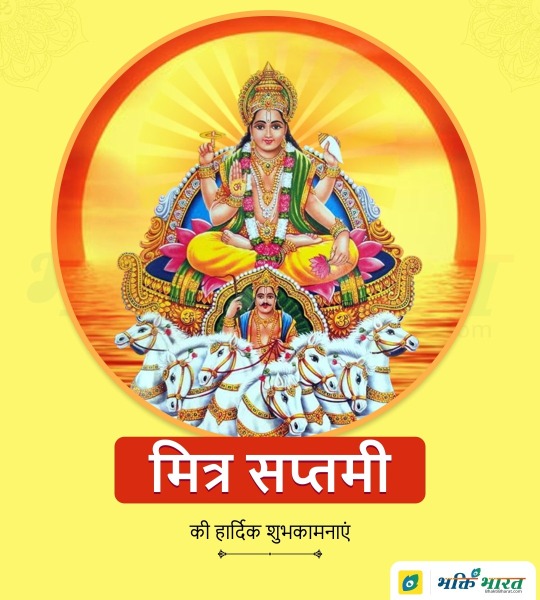
For Quick Access Download Bhakti Bharat APP:
📥 https://play.google.com/store/apps/details?id=com.bhakti.bharat.app
☀️ आदित्य-हृदय स्तोत्र - Aditya Hridaya Stotra
📲 https://www.bhaktibharat.com/mantra/aditya-hridaya-stotra
📜 गीता जयंती - Gita Jayanti
📲 https://www.bhaktibharat.com/festival/gita-jayanti
2 notes
·
View notes
Text
Shyam vanatala neel achala
Shyam kardhar radhe
Chitanandita atahi phulakita
Hriday hridaya sobaje
Dekhe sundar sab kar jor sab
Jugal milan ki chavi
Yug bite kata gan gavat
Kat bunit kat sat kavi
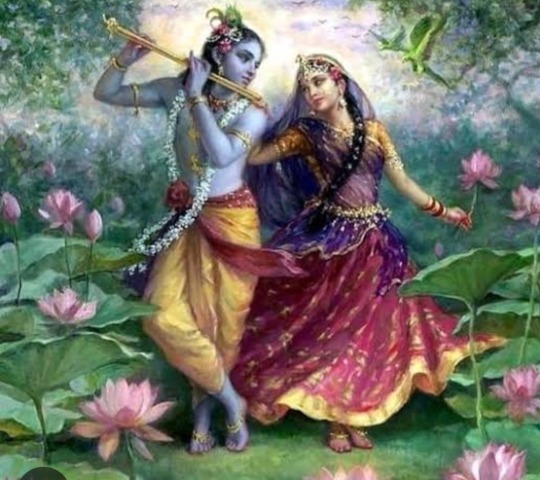
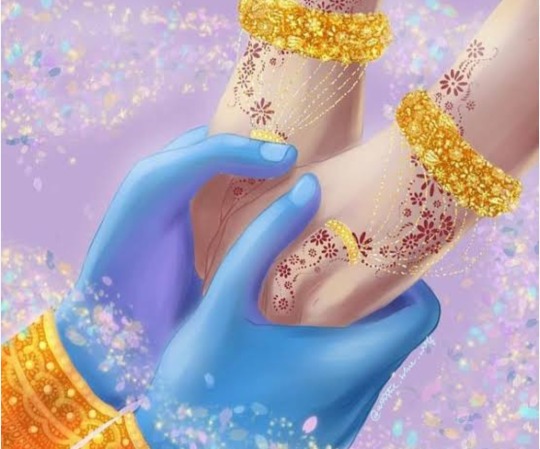

8 notes
·
View notes
Text
Mera hridaya ruk jayega aaj
4 notes
·
View notes